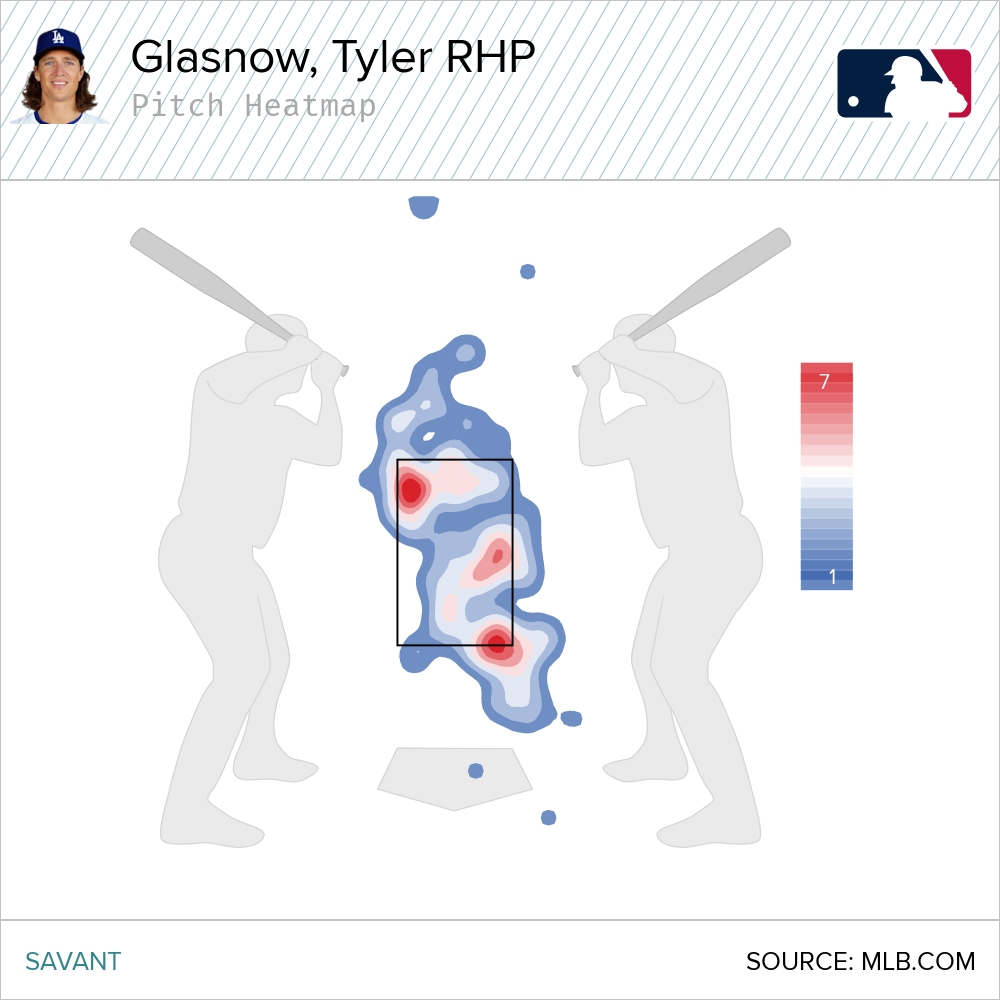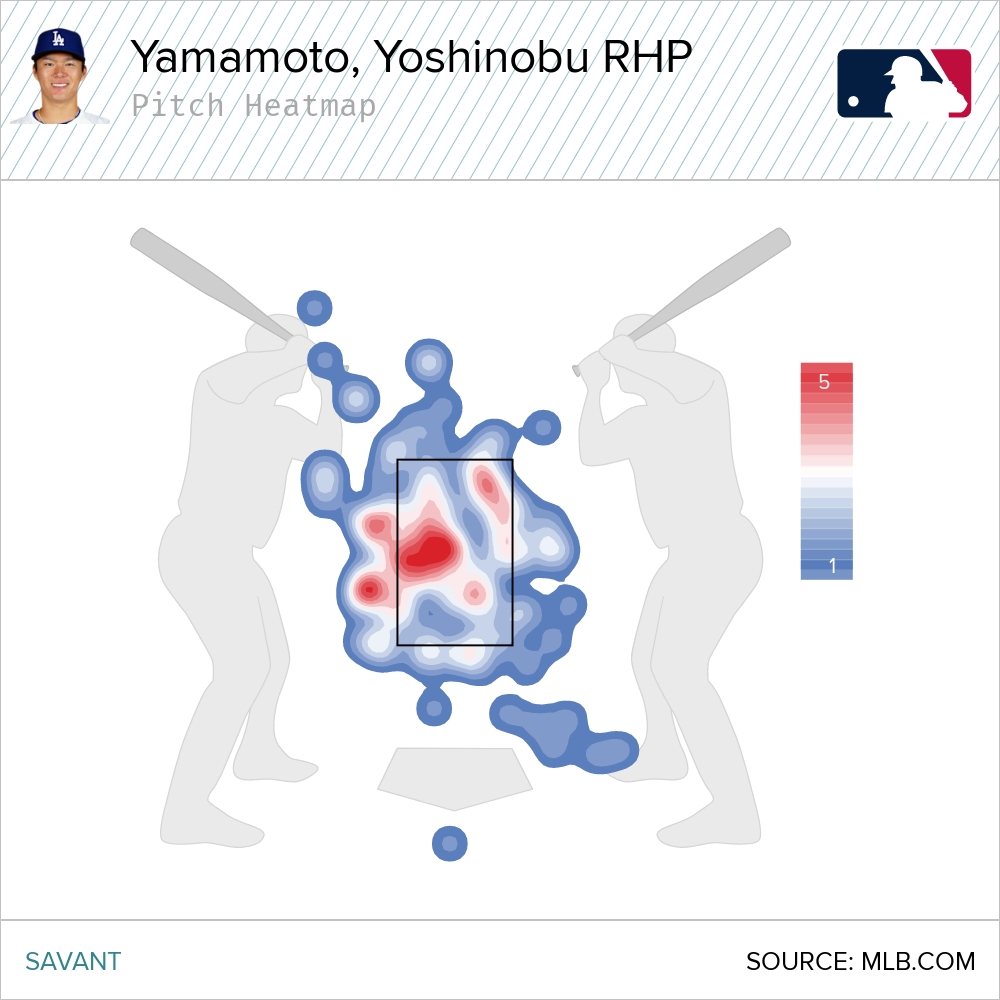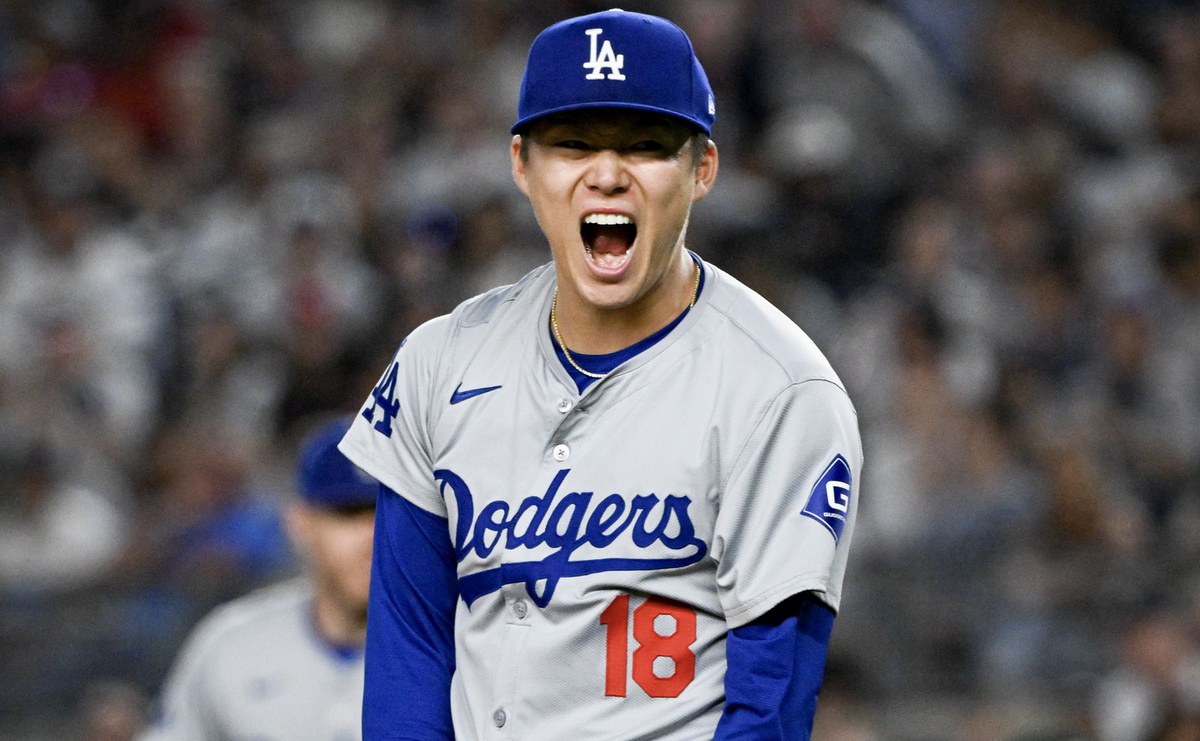The World Series begins tomorrow and despite pitching usually reigning supreme in October, this matchup features two of the best offensive teams in baseball, and that has carried over to the postseason.
The Dodgers are averaging 6.4 runs per game (5.2 in regular season), while the Yankees are averaging 4.8 runs per game (5.03 in regular season). New York has two of the most feared hitters outside of Los Angeles (and in the game) in Aaron Judge and Juan Soto, and neutralizing them will be a key for the Dodgers’ pitching staff. However, there are a lot of other quality bats in the lineup as well, not unlike the Dodgers.
So how should the Dodgers go about attacking the Yankees’ hitters, and can we glean anything from the 3-game set the teams in June in New York?
First, I would highly recommend watching this video by Lance Brozdowski, as he does an excellent job breaking things down.
Now, I’m going to try to some of these thoughts — mixed with my own — into words some charts and graphs.
——
The Yankees destroy 4-seam fastballs. In the regular and postseason combined, they hit .255/.363/.474 with an MLB-best average exit velocity (93.3 MPH) and HardHit% (51.9). In this postseason alone, those numbers are .291/.398/.593, 97.5 MPH and 67.6 HardHit%. Yikes! In the video above, Brozdowski highlighted the fact the Dodgers have thrown the most 4-seam fastballs of any team in this postseason, and that might need to change in this series.
The Dodgers have thrown 4-seamers 43.6% of the time and haven’t been overly successful with it. The Padres and Mets hit .248/.337/.418 with a 91.9 MPH exit velo and 46 HardHit%. Outside of a 2-game postseason appearance by Atlanta (9.1%), the Dodgers’ 17% whiff rate on 4-seamers is the worst of any playoff team. Then again, the pitch isn’t used primarily as a whiff pitch, especially considering the makeup of the Dodgers’ pitching staff.
Walker Buehler used to be a demon with the 4-seamer, but that has gone by the wayside. Yoshinobu Yamamoto‘s 4-seamer is solid, but definitely not his primary or even secondary out pitch. Jack Flaherty — especially if his velocity isn’t here as it wasn’t in Game 5 of the NLCS — isn’t reliant on his fastball to get a ton of outs.
If the Dodgers are going to have any hope of neutralizing the Yankees’ hitters, they’re going to have to do it with non-4-seam fastballs. And if you filter for expected weighted on-base average (xwOBA), the Yankees had a .307 mark — the best in baseball. So, the Dodgers are not only going to have to use spin, but they’re going to have to locate it.
They’ll also need the changeup/splitter category (offspeed) to make a strong appearance, as that’s the type of pitch the Yankees have struggled most against this postseason: .115/.233/.135, .186 wOBA. It isn’t a big part of the Dodgers’ collective arsenal, as three of their Top 4 offspeed guys are either hurt or won’t be on the World Series roster: Landon Knack, Bobby Miller, Gavin Stone. Right now, you basically have Yamamoto and his splitter and Brent Honeywell Jr. and his screwball. Sure, Buehler and Flaherty have changeups, but there’s a reason why they don’t throw them very much.
It’s unfortunate because Stone had a solid start in New York on June 8 (5 2/3 IP, 8 H, 2 R/ER, 6 K). The most impressive start was Yamamoto’s seven scoreless innings, but the most intriguing outing may have been Tyler Glasnow‘s. Glasnow threw in New York on June 9. He took the loss after giving up five runs in six innings, but he also posted a 12:1 K:BB ratio in the game. New York’s 14 total strikeouts were its second-highest number of the, while Glasnow’s 12 were the highest by any pitcher against the Bronx Bombers this season.
The big blow against Glasnow came in the sixth inning off the bat of Trent Grisham. Grisham hit a 3-run homer to give the Yankees a 5-3 lead. It came on a 97 MPH 4-seamer down the middle, just a little above the knees. Oswaldo Cabrera‘s line drive off the right field foul pole came on a 97 MPH fastball. The double Judge hit off Andy Pages‘ glove in center field came on a 97 MPH fastball. Sensing a theme?
And it isn’t like Glasnow was particularly bad that night, he just give up some loud contact, mostly on his heater.

You just have to tip your hat to the Yankees’ hitters when a pitch heatmap looks like this and you give up five runs. But the reason he did so was because of subpar fastball command. Glasnow gave up 12 balls in play above the MLB average exit velocity of 88.8 MPH. Seven of those were at 101 MPH or higher, and six of them went for hits (four for extra bases).
If you look at his breaking ball heatmap, that’s where things get interesting.

Aside from the top-left quadrant, he was pretty spot on with his breaking ball command. In fact, he may have been a little too much in the zone with it in the bottom-right quadrant. Still, he got 12 whiffs on 20 swings on his slider and 22 whiffs overall — including 3-for-3 on his sinker. No other pitcher in baseball induced more whiffs in a single game against the juggernaut Yankee offense than Glasnow did. And if you look at the guys immediately following him on the list, you have a lot of guys who aren’t reliant on the 4-seamer — Logan Gilbert (30.8%), Tarik Skubal (33.2%), Kutter Crawford (33.7%), including two guys who don’t even throw a 4-seamer in Corbin Burnes and Cristopher Sanchez. Perhaps everyone needs to talk to the Mariners’ Bryan Woo, who induced 16 and 20 whiffs in his two appearances against the Yankees — 22 of those whiffs came on his 4-seam fastball.
Here’s Yamamoto’s heatmap from June 7.

Yamamoto lived more in the strike zone in his outing than Glasnow did, yet he gave up much less hard contact. He allowed just five balls in play hit harder than the MLB average exit velo — three came on the fastball, two of which were harmless ground balls.
Here is his offspeed pitchmap from that same outing.

It looks different, mostly, because of the splitter, which plays differently to each hitter than the slider does. He fared pretty well with these offerings, even if the command wasn’t always great. It’ll have to be when he takes the ball in Game 2 at Dodger Stadium.
——
Old friend Mike Petriello of MLB.com broke down how to get the sluggers out in this series. Basically, the Dodgers are going to have to stay away from 4-seamers to Judge and especially Soto, change the eye level with heaters and breaking pitches and, basically, have pinpoint command of all pitches (could be said about all pitchers). Brozdowski said in his video he could see the Dodgers incorporating more cutters, sliders and splitters — depending which pitcher is in the game and against which Yankee hitter. Again, that all seems like Pitching 101, but it makes a lot of sense in this series.
Much like pitching in general, command and location is going are key. Their fastballs aren’t what they once were the case of Buehler, consistently average in Flaherty’s case and not a true out-pitch in the case of Yamamoto. This doesn’t factor in the bullpen, but we know there are a couple guys there who rely a lot on the 4-seamer — Michael Kopech (77%), Alex Vesia (63.3%), Honeywell Jr. (52%), Daniel Hudson (50.3%) — so they are going to need to have great command of it so as to not miss in the zone, because the Yankee hitters will, likely, demolish said pitches.
——
As has been my mantra for this (and every) postseason: If the Dodgers hit enough, the pitching won’t matter nearly as much. This is one of the worst Dodger postseason pitching staff in quite during this 12-year run. The bats have needed to show up to get them this far, so why not do it for four more wins?
 Dodgers Digest Los Angeles Dodgers Baseball Blog
Dodgers Digest Los Angeles Dodgers Baseball Blog
